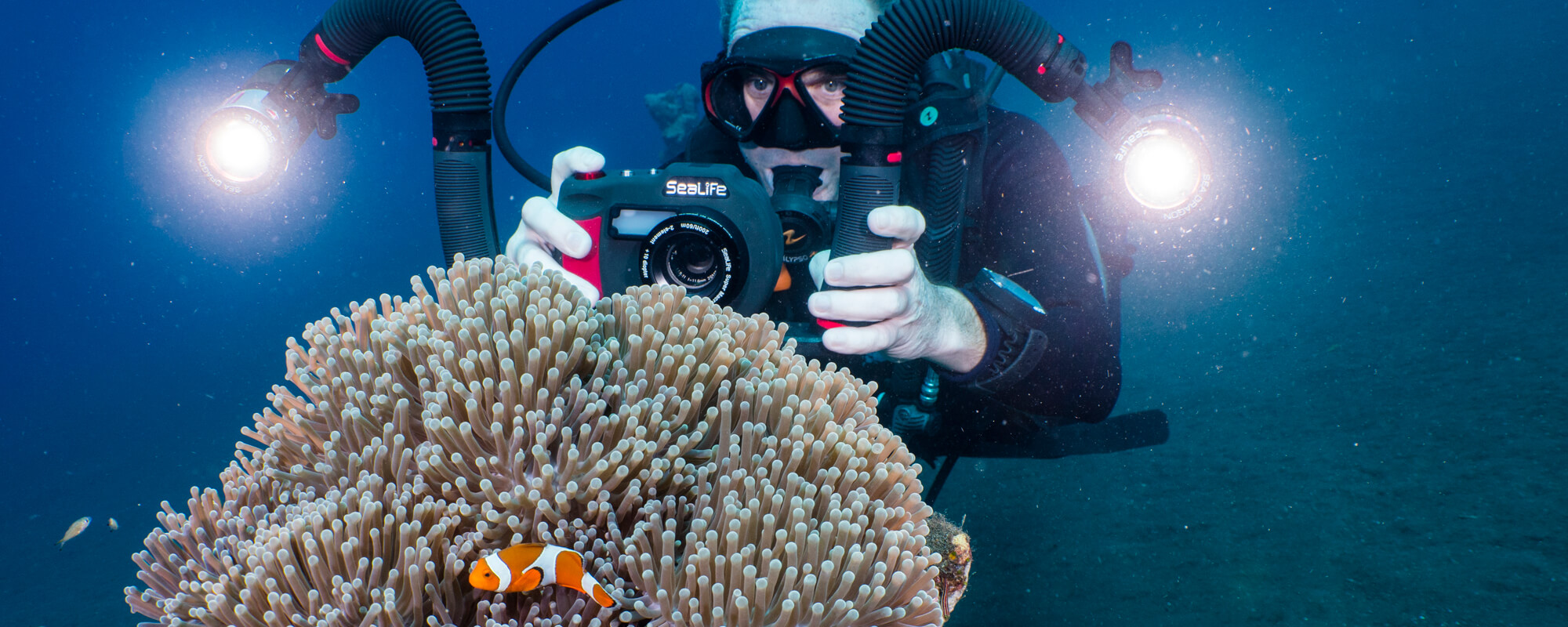By The SeaLife Staff
In our article How to Select an Underwater Dive or Photo-Video Light, we covered some of the basic features to look for. Since there are many digital camera options now, and the fact that these cameras require a substantial amount of light to produce a acceptable and colorful image, we want to focus on the most important features to look for in underwater imaging lights; whether it’s still photography or video.
- Brightness: While many flashlight producers use a lux rating for brightness, in the underwater world we mostly use lumens (we’ll keep it brief, and won’t go into the technical differences between the two). Look for a light of at least 1500 lumens or more, preferably at least 2000 lumens. Keep in mind many brands either stretch the truth or flat out lie about the lights actual performance. Focus on good, established brands and read the test reports.


